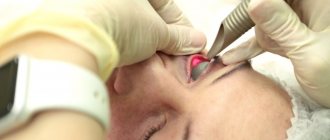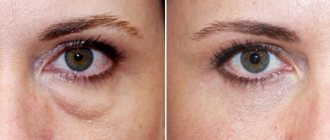Many people, especially women, are concerned when a mole appears with facial hair. And some even believe that this is a mystical sign. In addition, most of us do not know why such formations appear and how to get rid of them. Previously, it was generally believed that people with such marks were messengers from hell. Therefore they were executed at the stake. But after some time, women began to believe that such formations could be considered jewelry, and they even painted them on their faces. But it’s one thing for a mole to be beautiful and neat, and another thing for it to be when vegetation begins to appear on it. Then the question arises: is it possible to pull out hair from a mole? Let's figure it out now.
Moles
Should you worry if hair starts to grow on a mole? As it has become known recently, moles are neoplasms that, under the influence of certain factors, can develop into a malignant tumor.
And if you really touch this formation often, you can get an infection and only harm yourself. There are many cases where an ordinary mole developed into a tumor. Most people are concerned that such moles may be large, convex, painful, or hair will grow on them.
The structure and location of hair in the skin
The skin consists of three layers:
First
- epidermis. The cells of this layer originate at the border of the first and second layers. During their life, they gradually harden and move to the surface of the skin. All epidermal cells are completely renewed in 2 weeks.
Second
layer - dermis. This is the basis of the skin, consisting of connective tissue. It also makes up ligaments and tendons. It is this layer that gives the skin elasticity and strength at the same time.
Third
layer - subcutaneous adipose tissue (subcutaneous fat). As you might guess, it contains mainly fat cells.
As you can see in this picture, the hair follicle is located on the border of the second and third layers, i.e. dermis and subcutaneous tissue. This is where the vessels that feed it approach the hair.
Not dangerous
What to do if hair grows from a mole? What does it mean? This is actually not a problem and there is no need to worry. You need to know that hairs do not grow on moles that degenerate into a tumor.
And, according to scientists, such formations on the body are not dangerous. Their only drawback is their lack of aesthetics. The reason why hair grows on a mole is that there are more hair follicles in this area.
How deep do moles grow into the skin?
Very often, people think that moles have some kind of “roots” that can grow deep into the skin. Fortunately, this is not true for benign moles. These skin formations do not have any roots and in the vast majority of cases they are located no deeper than 1 mm.
In black in the image I drew the most common location of the mole in the thickness of the skin. You can see that even with the deepest location of the nevus, the hair roots are usually located lower.
Removal
So is it possible to pull hair out of a mole? People who have hair growing on a mole try not to touch or remove it. After all, they are afraid of harming themselves in this way. But no need to worry. There are ways in which such hairs can be removed. If you do this at home, it is best not to pull it out with tweezers, but to carefully cut it off so that it is not visible. And this will not harm, but will help get rid of annoying vegetation for a while. However, one should not assume that the presence of hairs is a sign of serious pathologies in the body or on the skin. But according to the latest data, it is possible to have surgery to remove hair from a mole.
Exploratory survey
Before you begin removing hairs from a mole, you need to undergo an examination that will help you determine whether it is possible to act on the bulbs of unwanted vegetation.
If, when removing hairs, a mole begins to change, hurt, or ooze, it is necessary to consult a doctor as soon as possible. Therefore, as mentioned above, you need to consult a doctor before you begin hair removal. This way you can avoid unpleasant consequences.
Well-being when sick
Best materials of the month
- Coronaviruses: SARS-CoV-2 (COVID-19)
- Antibiotics for the prevention and treatment of COVID-19: how effective are they?
- The most common "office" diseases
- Does vodka kill coronavirus?
- How to stay alive on our roads?
Typically, the early stages of melanoma do not cause the patient any inconvenience, discomfort, or pain. After stage 3, when metastases occur, pain begins to appear, and with the onset of stage 4, anemia, weakness, frequent cough, aching bones, exacerbation of chronic pathologies, enlarged lymph nodes, loss of appetite, headaches, nausea, vomiting, and convulsions are added to it. . Depending on the location of metastases, memory loss may occur, vision may deteriorate, and constant pain in the skeleton, right hypochondrium, and chest space may occur.
The danger of melanoma lies precisely in the fact that the patient practically does not feel the most treatment-friendly stages, so he is in no hurry to seek help, and when metastases occur and the melanoma can no longer be cured, the patient begins to be bothered by all sorts of unpleasant symptoms, which have to be dealt with make significant efforts. In general, the state of health in patients with melanoma in late stages is negative, which further depresses already exhausted people faced with oncology.
Reasons for appearance
How does it appear? And why does hair grow from a mole?
- A mole may appear due to hereditary predisposition.
- When a woman's hormonal levels change. This usually goes away during pregnancy. But in addition to the fact that moles appear during pregnancy, this tendency has also been noticed in adolescents. And all because rapid puberty occurs during this period. In addition, even during menopause, hairs on the mole may grow.
- Under the influence of ultraviolet radiation, moles - nevi - also develop on the skin. With prolonged exposure to sunlight on the human body, the skin begins to experience stress. This leads to intensive production of melanin, and as a result, the growth of moles.
Examine the stain before removing hair
If a person discovers a new spot on his body on which vegetation appears, the thought immediately arises: is it possible to pull out hair from a mole?
Before you begin removal, you need to pay attention to the newly formed stain.
- hairs can be removed from moles that are flat and small in size, and also if the edges are smooth. These formations are the safest.
- If the mole is large in size and has uneven edges, protruding, then hair pulling can be resorted to only after the doctor looks at the formation and conducts a full examination.
When a person with a problem turns to a doctor and asks whether it is possible to pull out hair from a mole, he answers that you can only resort to cutting or special removal methods.
Prohibited Methods
What not to do to get rid of unwanted hair on a mole?
- Some people get rid of hair by shaving it, which is strictly forbidden, because the blade can damage the surface of the mole. As a result, an infection will get there, blood poisoning may occur, and a tumor may develop.
- Another method used to get rid of hair is waxing. But if hair grows on a mole, it cannot be removed in this way. This can damage this area of the body.
- Removing hairs using chemical hair removal is also prohibited due to the fact that the integrity of the problem area of the skin is again compromised.
- You should not pluck with tweezers (especially if facial hair grows from a mole) without a doctor’s permission. This procedure is very dangerous if done carelessly. Then a malignant tumor may develop. Vegetation can be removed only after the stain has been fully examined and the doctor has confirmed that it is benign.
How dangerous are moles and how not to miss their degeneration into cancer? Oncologist-surgeon tells
A mole on the face and body in different historical eras was a sign of beauty and piquancy. Modern medicine does not share the enthusiasm for them. Because pigment formations can even be of malignant origin. Which of your dozens of moles requires attention and when should you contact a specialist? Vera Grechanik, a 1st category oncologist surgeon, spoke about this
– Vera Nikolaevna, a person far from medicine, most often calls all formations on the skin moles. Please tell us what moles are and why they appear?
Vera Nikolaevna Grechanik, oncologist-surgeon. Photo from personal archive
– Moles (in medicine called nevi) are pigmented benign formations, an accumulation of pigment cells. There are congenital (they are not visible at the birth of a child, but become noticeable only under the influence of hormonal factors) and acquired (in response to any influence - solar radiation, mechanical friction, for example, clothing). As a person grows, both the moles themselves and their number grow. The appearance of new ones is often associated with changes in hormonal levels throughout life, their trauma, exposure to solar radiation on the skin, and decreased immunity.
– Which of them can develop into a malignant tumor?
– There are melanomatous moles and non-melanomatous types of moles. The following types of moles are most often predisposed to the development of melanoma: dysplastic, blue, giant congenital and borderline, i.e. there are only four main types. Remember that moles on the palms, soles and genitals are always borderline moles due to the anatomical features of the skin in these areas. They are subject to prophylactic surgical removal because these areas are most often chronically injured.
Among the serious oncological skin diseases there is cancer, and there is melanoma.
– What is melanoma?
Melanoma is a malignant skin tumor that develops from melanin-producing cells. Melanin is a pigment produced by melanocytes - skin cells that determine skin color and the possibility of tanning.
Melanoma is the queen of oncology, its behavior is unpredictable. It develops only in 30-40% of cases from moles.
Skin cancer is divided into two main subtypes: basal cell carcinoma and squamous cell carcinoma. Basalioma is treated with surgery or radiation therapy and is one of the most favorable types of tumor. It does not metastasize, but grows quite slowly (depending on the immune system). Squamous cell carcinoma in the first two stages is highly treatable; in the 3rd and 4th stages it is much more difficult to fight it, and it has a more aggressive course. It is often a disease of old age and is diagnosed in those over 70.
– Can melanoma be recognized independently?
– There is a FIGARO , it is convenient for self-diagnosis. Let's look into it. Form . Here we are talking about changing the shape of a mole. Let me give you an example: it was flat, but it became convex. And changing sizes, accelerating growth. Everything is clear and understandable. If a mole was there from birth and grew slowly along with the person, this is not accelerated growth, this is the norm. If it has never grown much, but in two weeks or three months it has doubled in size, this is the same accelerated growth. Borders . They were clear and clearly visible to the eye, but suddenly they became blurry and indistinct. And symmetry - one half of the mole became different from the other. Dimensions . Large moles are usually moles larger than 6 mm. Oh paint. Uneven - randomly located brown, gray, pink and white areas on the mole. Or discoloration of a mole. We also pay attention to this.
I also like the ABCDE , which is easy to remember.
A – asymmetry – asymmetry of formation. B – border – the appearance of an uneven edge. C – color – change in color, often darkening or cyanosis. D – diameter – change in diameter and dimensions. E - evolution - development.
Any of these changes may be a reason to consult a doctor.
– What methods of diagnosing moles exist?
– First of all, this is an examination by a specialist. If you want to know who to contact first, I would recommend consulting a dermatologist. The doctor will determine whether a consultation with an oncologist is necessary, whether dermatoscopy or mole removal is necessary.
Dermatoscopy is an examination of skin formations using a dermatoscope, a special device that allows you to “look” inside a mole without surgical intervention, evaluate its type, structure and determine whether it is benign and whether there is a need for its removal. I would like to note that the doctor’s experience is important when performing dermatoscopy.
A doctor examines a patient's mole. Photo www.illustre.ch
– What are the methods for self-control of moles?
– I usually advise patients the following way: take photographs, store them in an archive, monitor them and, if changes are noticeable, consult a doctor - a dermatologist, oncologist or therapist. Another option is to take a thin transparent sheet of paper, apply it to the mole, outline the contours and write the date and size of the mole. And so once every 3 months. The so-called map of moles will be at hand, and you can always determine how much they have changed.
– In what cases of the appearance of skin formations should a person urgently run to the doctor? Is it a warning sign if a mole gets bigger?
– It all depends on how many more moles a person has. The main thing is to make sure that they do not disturb or change dramatically. You need to run to the doctor if, for example, a mole is injured or a frequently injured mole in the sun is additionally burned. This often happens in men in the torso and arms, and in women on the legs. If a mole bothers you, hurts, itches, or causes discomfort, droplets of liquid seep out of it and a crust forms. If a mole has changed shape, color, or its boundaries have become unclear. Women are more susceptible to hormonal changes. During the period of feeding and childbirth, pregnancy, a new number of moles “sprinkles”. There is no need to panic, but it is better to visit a specialist doctor as planned.
– That is, Can injury lead to skin cancer?
– One-time – unlikely. Chronic - yes, it can. Every person in his entire life accidentally injures moles either with a razor, or with clothes, or simply scratches. Children love to “twist” moles from their parents. Long-term chronic injury over several years can lead to skin tumors.
– Is it necessary to remove moles and warts if they cause only aesthetic discomfort or is it better to avoid surgery without medical indications? People often prefer not to touch anything.
– Removal of skin lesions has two indications: medical and cosmetic. It can be removed for cosmetic purposes; even an ordinary cosmetologist can do this, but after consulting an oncologist. If the formation interferes, it is better to remove it. But if a person is comfortable with it, it doesn’t injure him in any way, outwardly everything suits him, and the doctor said that it’s not dangerous, then why remove it? You can't remove all moles.
– What methods of mole removal exist in modern medicine?
There are several of them. A surgical method in which the mole is removed with a scalpel. Laser removal method - the formation is removed with a laser like a scalpel or evaporated by a laser (if a mole - it is necessary like a scalpel, if the papilloma can be evaporated). The method of removal with liquid nitrogen is cryodestruction. Removal with an electrocoagulator - burning with electric current. Another method is radiosurgical removal: a special device acts on an area of skin with a high-frequency electromagnetic wave.
Each method has its pros and cons. There is a certain type of mole that can only be removed surgically. There is – surgical, and laser, and current, and nitrogen, and radiosurgical. The method of removal should be determined by an oncologist or dermatologist at the appointment.
I’ll tell you for sure that you can’t burn off moles at home using any homemade “folk” remedies.
– Are there proven risk factors or is the nature of skin cancer unknown?
– In general, all known risk factors for skin cancer can be divided into environmental factors and factors of the internal environment of the human body. For example, the geographic latitude of a person’s place of residence and the associated intensity of solar radiation. His phototype, heredity. Reproductive factors in women. Mole injuries. Chemical carcinogens, including hair dyes, ionizing radiation. The social status of a person and his profession, the fact that a person lives in a city or in a rural area, whether he works outdoors or whether a person spends most of his time indoors are important. It is important what medications are taken on an ongoing basis, viral infections in the past (rubella). Risk factors are the presence of diseases such as xeroderma pigmentosum, Dubreuil's melanosis, and a large number of melanoma-dangerous nevi.
Currently, exposure to the ultraviolet spectrum of solar radiation is one of the most important factors contributing to the occurrence of skin melanoma. For the occurrence of skin melanoma, what is much more important is not chronic damage to the skin by UV rays, as is typical for basal cell carcinoma and squamous cell carcinoma, but sharp and intense damage. Even a single exposure to ultraviolet light can lead to melanoma.
– Can skin cancer be cured with the advances of modern medicine?
– Basalioma can be completely cured. After 5 years, if there are no relapses, the person is removed from the register. People with melanoma and squamous cell carcinoma will never be eliminated, but a cure is possible.
– Is it true that if hair grows from a mole, then this is already a guarantee that the mole is harmless?
– No, hair growth is not a guarantee, but this is an indicator that everything is still fine with the mole. Plucking hair is strictly prohibited. It’s better to carefully cut them off, because when we pull them out, we injure the mole, it can get infected and form an abscess. And so over and over again... This is chronic traumatization.
At the same time, I advise removing a mole with hair surgically, and not with a laser, because otherwise the hair will continue to grow. It is difficult to completely excise such moles under adequate laser control.
– Many women and men do hair removal. Isn't this dangerous for those who have many moles on their arms and legs? For people with a large number of moles, which type is better to choose - hot wax hair removal, laser hair removal, or other than shaving?
– During laser hair removal, moles must be protected. This is a fairly aggressive targeted effect on a small area of the body, and there is a risk of developing skin diseases. If we are talking about waxing, sugaring, moles must be covered in advance with a band-aid with a soft base, so that when the band-aid is peeled off, it will not be injured. If we talk about laser hair removal, you need to use various cosmetics that cover moles (white cosmetic pencils, for example) and not treat moles that cannot be covered. Hair on moles cannot be removed, and professionals should be aware of this. If there are a lot of flat moles, I still recommend razors.
I often get asked questions: is it possible to do laser hair removal before going to the sea? Will laser radiation affect the skin, and will there be burns at sea? This is asked by those who don’t want to use sunscreen all the time while on vacation. If the laser allows you to individually select parameters for the phototype, hair type, and its characteristics, then the effect on the skin will be minimal. But! When on vacation, it is still necessary to use sunscreen cosmetics under any conditions. Regardless of whether there was laser hair removal the day before or not.
– What about all kinds of chemical peels on the face? Is this dangerous for moles?
– If this is done by a person who has a lot of moles on his face, then you should be careful. Using aggressive cosmetics, you need to avoid all these moles. Even superficial damage can lead to changes in its structure. If the face is clean in terms of moles and there are only small pigments, then you can do peeling. And it is best if this is done by a qualified specialist. If there are moles on the face, we should only consult a doctor.
– Aren’t peeling masks sold in regular stores dangerous?
– It all depends on the concentration of chemicals. It is not dangerous if, when used independently, large and prominent moles are not affected.
– Is it forbidden for fair people to travel to the south?
– No, it’s not prohibited. You just have to follow tanning etiquette. They are not allowed to be in the sun from 11 to 16. They are not allowed to sunbathe in the open sun. You need to lie under an umbrella, under protection, because you will still get a tan. There is no need to avoid the sea and sun. Everything just needs to be done correctly.
By the way, office workers are susceptible to this “disease”: once a year they prefer to spend two or three weeks at sea, catch as much sun as possible and come home with dark chocolates. Imagine what a blow to the skin this is!
But you need to sunbathe wisely, slowly, using sunscreens with a high protection factor.
– Can taking certain medications affect the condition of moles?
- Complex issue. Taking too many medications can cause more moles to develop. Long-term use of hormonal contraceptives by women increases their risk of developing skin tumors. The possibility of skin melanomas occurring in patients due to long-term treatment with the drug, which is used in the treatment of Parkinson's disease, has been noted. This is due to the specific metabolism of the drug in the body.
– Is a solarium more dangerous than the sun?
– If the solarium has high-quality lamps and you use the right approach, then no. But if a person comes to the procedure for the first time and just for 10 minutes, then this is bad.
But we won’t say “no” to the solarium. It is ideal to start with 1-1.30 minutes and go there not every day, but at least every other day.
There is such a myth - to prepare your skin for the sea in a solarium. If you start doing this, then a month or two or three before the rest, as I said above. If you get a quick and intense tan in a solarium in a short time, this is not beneficial, it is harmful. The tan will be superficial and will not fulfill its function of protecting the deep layers of the skin from damage by ultraviolet radiation, but rather, on the contrary, will cause additional damage to the skin. After all, tanning is a protective reaction, it is a mechanism that does not allow ultraviolet radiation to penetrate deeply and damage the skin more and more.
– How should people who have already had skin cancer protect their skin?
– They should protect their skin from the sun as much as possible, just like other people. You should also add a wide-brimmed hat to your wardrobe and use sunglasses with high-quality filters.
– Does vitiligo affect the occurrence of skin cancer?
– The absence of pigment in the area of vitiligo does not exclude the risk of developing melanoma, unfortunately. I recommend consulting a dermatologist to limit the spread of lesions as much as possible. Because, in principle, this disease itself can bring its own discomfort in a person’s life.
– Are there ways to prevent skin cancer? How to protect yourself?
– Do not injure moles. Remove dangerous ones in a timely manner. Visit specialists. Monitor yourself for newly emerging formations. Clearly know the FIGARO in order to control. Be careful with the sun. It is important to examine yourself from head to toe: scalp, feet, finger spaces, genital mucous membranes. Yes, there are moles there too. And we can’t forget about the ears!
– Vera Nikolaevna, what do you recommend to our readers?
– In medicine, the most important direction is prevention. It is very important that people take care of their health at a stage when they do not yet need medical intervention for treatment.
What to do if a birthmark appears on your head?
When a mole appears on the head, its development is determined by where it is located and what color it is. In this case, you need to be very careful with this formation on your head, especially when combing and going to the hairdresser. If you are careful, such a mole will not pose a danger.
But such formations are not always small and do not interfere with their owner. If a cosmetic problem arises, it is best to remove the formation immediately so as not to provoke the development of cancer cells.
Adults can cope with difficulties on their own. But special attention should be paid to the problem when a mole appears on a child’s head. Again, you need to look at what shape the baby has. If the mole is flat, this is not a cause for concern. But at the same time, it is best to teach your baby how to properly handle this stain - do not comb or scratch. And if the mole has a convex shape, it is best to remove it immediately.
What does black hair from a mole mean?
For most people, birthmarks on the hair in the scalp are a cosmetic defect and do not cause problems throughout life. For owners of large marks of more than 5 mm, there are a number of restrictions associated with active tanning in the sun and going to a solarium. Prohibitions apply to carriers of multiple moles.
It is not recommended to expose places where melanocytes accumulate to ultraviolet light; against the background of increased insolation, degeneration may begin - a benign nevus becomes a malignant cancer. It is a tumor that has a tendency to change under certain conditions. Damaged cells begin to actively divide. As a result, the person is diagnosed with melanoma.
Hairy nevi are a natural physiological phenomenon











